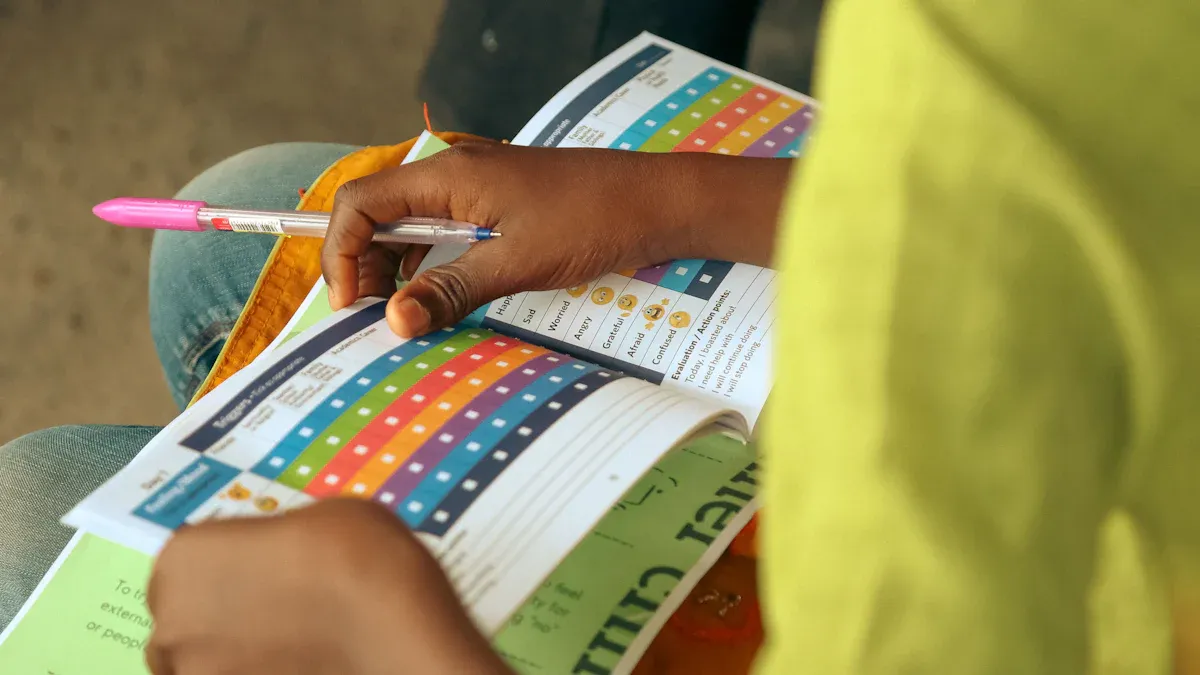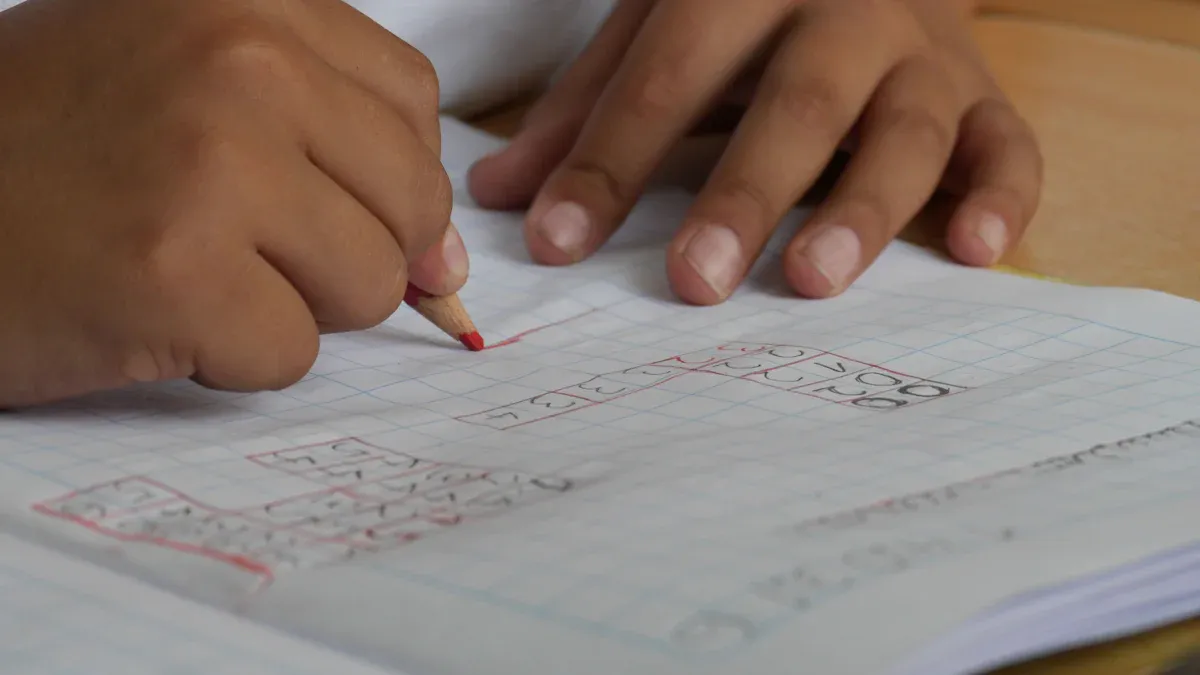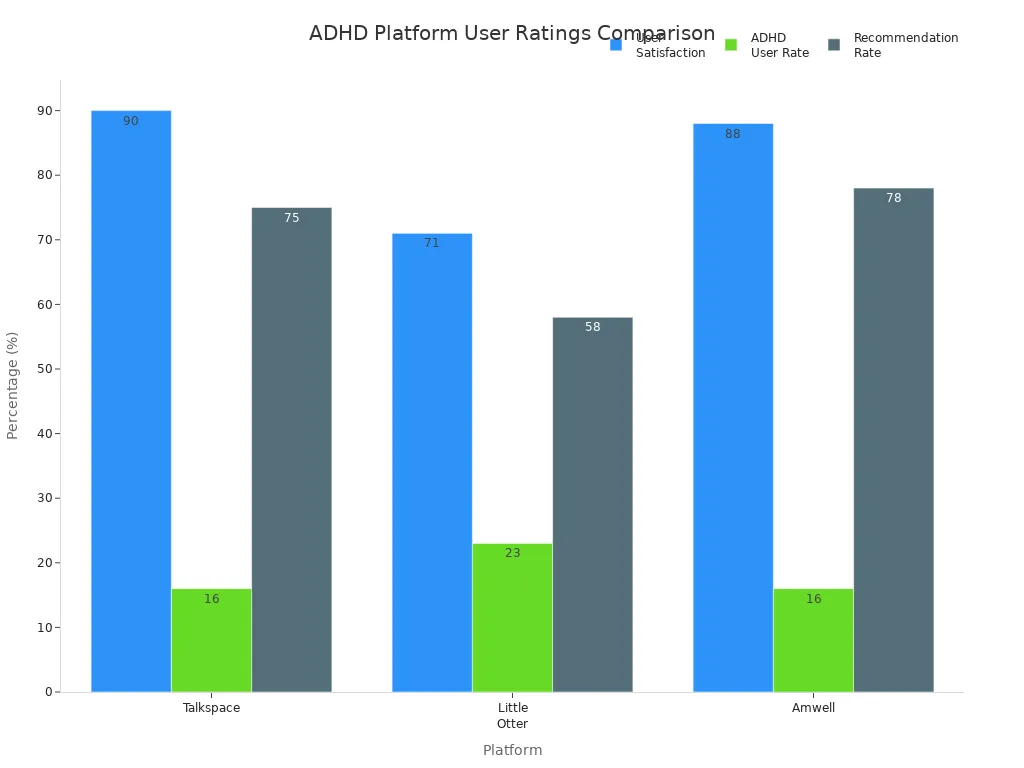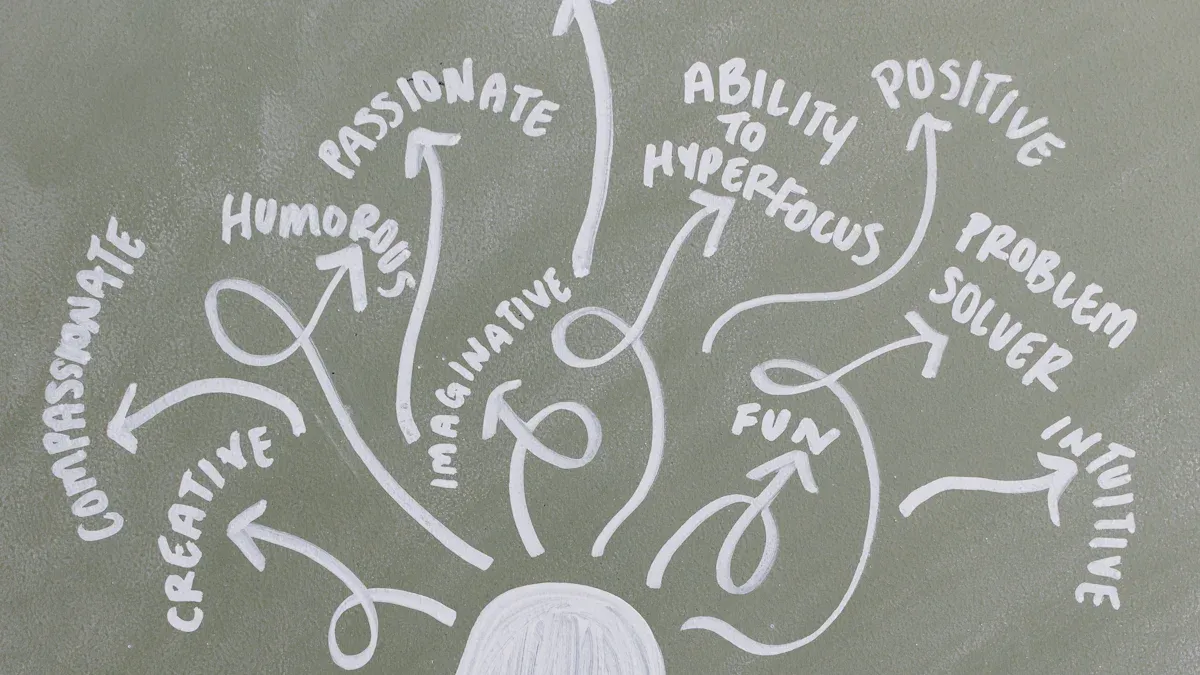Best planners for ADHD students that really work

Image Source: pexels
Finding the best planners for ADHD can truly support students in managing their daily lives. Some of the best planners for ADHD, like Codot, MyStudyLife, and Trello, are digital options that offer flexibility and convenience. On the other hand, paper planners such as Panda Planner or Happy Planner provide a tactile way to write things down. These best planners for ADHD help you keep track of your schedule, prioritize tasks, and stay motivated throughout the day. Many ADHD students prefer planners with pictures and reminders, as these features help maintain focus and reduce distractions. Codot stands out among the best planners for ADHD because it uses AI to learn your habits, making task management easier and more effective.
Best planners for ADHD

Image Source: pexels
Top picks overview
There are many choices for the best planners for ADHD. ADHD specialists suggest planners that help you stay on track. Here are some top picks:
-
Codot: This is an AI helper. It lets you manage tasks by talking or typing.
-
MyStudyLife: This digital planner helps students track classes and homework.
-
Banana Planner: This paper planner has easy-to-read pages.
-
Panda Planner: This paper planner tracks your mood and habits.
-
Trello: This digital tool uses boards and lists to plan visually.
-
Happy Planner: This paper planner is colorful and you can change the pages.
-
Rocketbook: This paper planner can be reused. You can upload notes online.
-
Erin Condren Planners: These planners have structure and tools for ADHD needs.
ADHD specialists like these planners because they have calendars and ways to block time. They help you set goals and have places for brain dumps. Some planners have "Don't Forget This" sections and mood trackers. The best planners for ADHD are the ones you use every day. You can pick a digital app or a paper planner.
Tip: Try out different planners. See which one helps you and keeps you going.
Why these planners work
The best planners for ADHD work because they fit how your brain organizes things. Many students with ADHD need pictures, reminders, and easy steps. Planners with icons, colors, and symbols help you remember tasks better. Visual schedules and reminders help you focus and finish work.
A review showed that visual schedules and reminders help students with ADHD stay organized. They also help students pay attention. Teachers and parents see better focus when students use planners with clear steps and reminders. Writing in a paper planner helps you get your thoughts out and avoid distractions. Digital planners can send reminders and help you make routines.
Here is a chart that shows how different ADHD management platforms rate in user satisfaction:

You can see that satisfaction rates are different. Using a planner with pictures and reminders can help you stay focused. The best planners for ADHD give you structure, help you set goals, and make your day easier to manage.
ADHD-friendly planner features

Image Source: pexels
Visual layout
A good visual layout helps you see things fast. If you have an adhd brain, seeing your whole schedule at once is easier. Trello uses boards and cards. You can move tasks and use colors. Codot has tags and categories you can see. This makes it easy to find what matters. MyStudyLife shows a calendar view. You can track homework and due dates. Studies say visual schedules help you remember tasks. They also make thinking easier. Using colors, icons, and clear pages makes your planner better.
Simplicity and structure
Simple and clear planners help the adhd brain. A planner with neat sections helps you focus on one thing. Panda Planner splits your day into three parts. Codot sorts tasks by what is most important and when it is due. This way, you always know what to do next. Research says structured planners work like a second brain. They help you sort your thoughts and feel less stressed. Simple layouts save time. You do not have to look for things. You get more done.
Flexibility and customization
Every adhd student needs something different. Flexible planners let you change things as you need. Trello and Codot let you make your own lists and reminders. Some paper planners, like Happy Planner, let you add or take out pages. You can set up your subjects, activities, and notes your way. The table below shows features that help with flexibility:
| Planner Feature | Description | Benefit for ADHD Students |
|---|---|---|
| Customizable Subject Index | Write your own class subjects | Reduces forgetfulness and frustration |
| Multiple Subject Boxes | Organize all classes or reminders | Fits diverse schedules |
| Monthly Calendar Views | Plan ahead and note holidays | Supports long-term planning |
| Ample Note Sections | Space for personal and school to-dos | Allows for adaptability in planning |
Custom planners help you stay organized even if your plans change.
Reminders and notifications
Reminders and notifications help you remember things. Digital planners like Codot and MyStudyLife send you alerts. These tell you about tasks and due dates. Codot changes reminders to fit your habits. This way, you get alerts at the best time. Studies show reminders help adhd students finish more work. Devices and apps that send alerts help you pay attention. They also help you stay organized. Using reminders helps you build good habits. You are less likely to forget important things.
Best planner for ADHD: Reviews
Codot
Codot is a top choice if you want a smart digital helper. You can talk or type to add tasks fast. The AI learns what you do and helps you focus. Codot puts your tasks in order by what is most important. It also sorts them by when they are due. The reminders change to match your daily routine. You get alerts at the right time. Codot lets you take notes and use tags to organize. Many people say Codot keeps them organized and less stressed. It feels like a real helper, not just an app.
Codot’s voice and chat tools help you manage your day without using your hands.
MyStudyLife
MyStudyLife is a digital planner for schoolwork and deadlines. You can keep track of homework, tests, and classes in one spot. The app sends reminders for things you have not finished. It also reminds you about things that are due soon. MyStudyLife works with different types of schedules. You can use it for rotating or normal weeks. You can open your planner on any device. Your information is safe in the cloud. Many students say MyStudyLife helps them manage time better. The app gives feedback and makes learning less stressful.
-
Pros:
-
You can use it on any device and your data is safe.
-
Cons:
- Some people want more ways to change the app.
Banana Planner
Banana Planner is a paper planner for students who want things simple. The pages are easy to read. You can see your whole day quickly. You write down your classes, homework, and goals. The planner uses bright colors and big spaces. This helps you focus on what matters. Banana Planner is good if you like writing by hand. It is not too hard to use.
-
Pros:
-
Simple pages with lots of space to write.
-
Bright colors make planning fun.
-
-
Cons:
- No digital tools or reminders.
Panda Planner
Panda Planner is a favorite for students with ADHD. You write your tasks and meetings by hand. This helps you remember them better. The planner has daily, weekly, and monthly sections. You can track your mood, habits, and goals. Many people say using Panda Planner every day keeps them organized. It also helps lower stress. The planner lets you block time and set task priorities. These are important for ADHD. Panda Planner is well-known in schools and has strong support.
-
Using it often builds time management skills.
-
The planner helps you set goals and see progress.
-
Pros:
-
Clear layout for daily and long-term plans.
-
Helps you build good habits and routines.
-
-
Cons:
-
Not good for random notes or pictures.
Trello
Trello is a digital planner that uses boards, lists, and cards. You can see your whole project at once. This helps you break big jobs into small steps. Trello’s visual style makes it easy to scan your work. You can use colors, labels, and checklists to keep track. Trello is good for group projects. You can share boards and give tasks to others. Many students with ADHD like Trello because it is clear and simple.
-
Pros:
-
Good for working alone or with others.
-
Cons:
- Too many cards can make things messy.
Happy Planner
Happy Planner is a paper planner with bright colors and fun designs. You can add or remove pages to set it up your way. The planner has quotes to inspire you and lots of space for notes. Many students with ADHD like the positive style. It makes planning feel good. You can pick from different sizes and layouts. Some people say it is hard to find your spot if you add too many pages. Most people like the creative freedom.
-
Pros:
-
You can change layouts to fit your needs.
-
Quotes help you stay motivated.
-
Cons:
- Too many sections can be confusing.
Rocketbook
Rocketbook is a notebook you can use again and again. You write by hand and upload your notes to the cloud. You can erase the pages and use them again. This saves space and cuts down on mess. Rocketbook feels like paper but stores notes online. You can keep all your notes in one place. Some students with ADHD like Rocketbook because it helps them remember better. You have to remember to scan and erase your notes, which can be hard.
-
Pros:
-
You can use the pages again and save paper.
-
Digital backup keeps your notes safe.
-
Mixes handwriting with online storage.
-
-
Cons:
-
It does not turn handwriting into searchable words.
Erin Condren Planners
Erin Condren Planners give you many choices for structure and flexibility. The PetitePlanner Folio System lets you add things like habit trackers and journals. The Academic Planner has dated calendars, weekly pages, and project trackers. You can pick layouts that fit your style, like vertical, horizontal, or hourly. The planners use color-coding and prompts to help you stay organized. Many students with ADHD say these planners help them manage time and set goals. They also help lower anxiety.
-
Pros:
-
You can change and add parts to fit your needs.
-
Visual layouts help you focus and remember.
-
-
Cons:
- Some planners get bulky if you add too much.
When picking the best planner for ADHD, look for features like visual layouts, reminders, and flexible setups. These tools help you stay on track and make your day easier.
Choosing your ADHD planner
Identify your needs
Start by thinking about what you need most from a planner. Every student with adhd has different challenges. Some students forget deadlines. Others feel overwhelmed by too many tasks. Ask yourself these questions:
-
Do you like writing by hand or typing on a device?
-
Do you remember things better when you see them, hear them, or do them?
-
Do you need a fixed schedule or a flexible plan?
-
Do you work best at home, on the go, or both?
Knowing your answers helps you choose a planner that fits your life. You can also think about where you will use your planner and how often you want to check it.
Match features to your style
You can match planner features to your learning and organization style. Many adhd students do better with planners that fit their habits. Here are some ways to find the right match:
-
Use color-coding for different types of tasks, like school, home, or friends.
-
Try highlighters or colored pens to keep your planner clear.
-
Make a key or legend to remember what each color means.
-
Break big tasks into smaller steps to make them easier to finish.
Some planners have time-blocking layouts, visual timers, or reminders. Others have brain dump sections or habit trackers. You might like planners with icons, progress bars, or mind map spaces. Choose what helps you focus and stay calm.
Tip: Customizing your planner can help you build good habits and stay motivated.
Digital vs. paper
You can pick a digital planner or a paper planner. Each type has strengths and weaknesses. Digital planners give you reminders, notifications, and updates on all your devices. They help you stay organized and let you edit plans easily. You can also share your planner with others and use cloud backup to keep your data safe. However, digital planners may distract you with other apps and need a device with battery.
A paper planner gives you a break from screens. Writing by hand can help you remember things better. You can decorate your planner and make it your own. A paper planner does not need charging and keeps you focused. But it can be bulky, hard to update, and easy to lose.
| Planner Type | Advantages | Disadvantages |
|---|---|---|
| Digital | Reminders, easy edits, cloud backup | Device needed, possible distractions |
| Paper Planner | Tactile, no screens, creative freedom | No reminders, less portable |
Choose the planner that matches your needs and helps you manage your adhd best.
Tips for ADHD planner success
Customization
You can make your planner work better by personalizing it to fit your needs. Customization helps you stay interested and makes planning less stressful. Try these strategies:
-
Pick a planner with flexible layouts, like daily, weekly, or monthly views.
-
Use color-coding, icons, or symbols to organize tasks and reduce confusion.
-
Break big assignments into smaller steps. This makes each task feel easier to start.
-
Set realistic goals. Focus on what is most important so you do not feel overwhelmed.
-
Change categories and layouts to match your strengths and challenges.
-
Choose a thin, spiral-bound planner with a weekly layout for easy use.
-
Attach a pen to your planner and use a binder clip to mark your page.
-
Keep your planner in a spot you see often, like the front pocket of your backpack.
-
Write down assignments right away instead of trying to remember them.
-
Use quick notes or shorthand to keep up with fast-paced classes.
Parents can help by having weekly planning meetings with you. This keeps everyone on the same page and builds good habits.
Building routines
Strong routines help you use your planner every day. A good routine gives you structure and makes planning part of your daily life. Here are some ways to build routines that work:
-
Get enough sleep and wake up at the same time each day.
-
Start your morning with a clear order of tasks to avoid feeling rushed.
-
Add some movement, like stretching, to help you wake up.
-
Use visual supports, such as checklists or charts, to guide your steps.
-
Stick to a routine style that fits you and try to keep it consistent.
-
Set a regular time for homework and include short breaks to stay focused.
-
Mix in fun or favorite activities to keep you motivated.
-
Review your planner at home and at school to reinforce your schedule.
-
Work with teachers and family to keep routines steady.
Visual aids and positive feedback can help you finish tasks and stick to your routine.
Staying motivated
Staying motivated can be tough, but small changes make a big difference. You can boost your motivation by:
-
Celebrating small wins, like finishing a task or remembering a deadline.
-
Using stickers, checkmarks, or rewards to track your progress.
-
Setting up reminders or alarms to help you remember important tasks.
-
Changing your planner’s look with new colors or designs to keep it interesting.
-
Asking for support from friends, family, or teachers when you need help.
-
Focusing on progress, not perfection. Every step forward counts.
Remember, your planner is a tool to help you succeed. Make it your own and use it in ways that work best for you.
Picking the best planner helps you stay on top of things. You can use digital tools like Codot or MyStudyLife. You can also try paper planners like Panda Planner or Happy Planner. The right planner helps you with your daily habits and goals. Studies say planners and coaching help ADHD students do better in school and life.
| Planner Type | Key Benefit |
|---|---|
| Digital (Codot, Trello) | Smart reminders, easy updates |
| Paper (Panda, Banana) | Hands-on, visual layouts |
You can choose a planner that matches how you work best. Keep a good attitude and keep trying new things until you find what helps you!